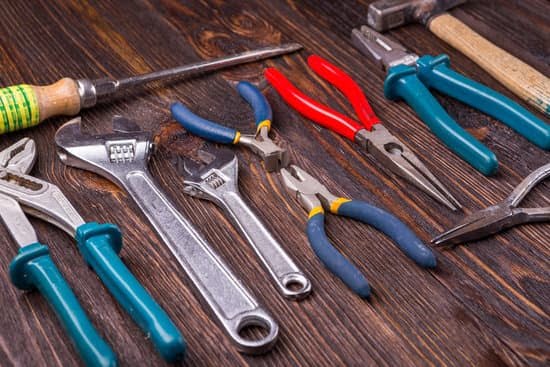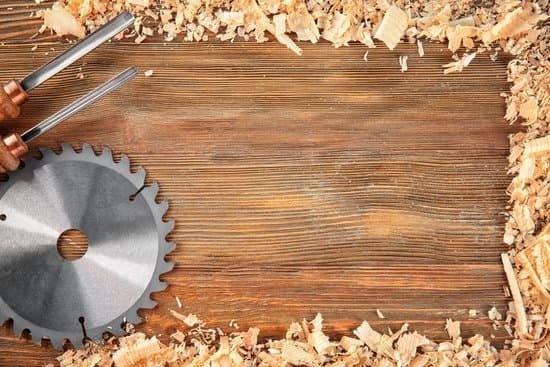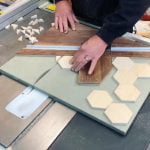French curves are essential tools for any woodworker looking to add elegant and complex curves to their projects. In this article, we will delve into the world of French curves in woodworking, exploring the different types, how to choose the right one for your project, and step-by-step guides on how to use them effectively. Whether you are a beginner or a seasoned woodworking enthusiast, mastering the art of using French curves can elevate your projects to new heights.
Understanding the Different Types of French Curves is crucial in woodworking. Each type serves a specific purpose and has its own unique design, allowing woodworkers to create various intricate shapes and designs. We will also discuss common mistakes to avoid and advanced techniques for incorporating French curves into woodworking designs.
Throughout this article, we will provide valuable tips and tricks for getting the most out of your French curves, as well as inspiring examples of woodworking projects that showcase the beauty and versatility of these tools. By the end of this comprehensive guide, you will have gained the knowledge and confidence to wield French curves with precision and creativity in your woodworking endeavors. Stay tuned as we embark on this journey into the art of using French curves in woodworking.
Understanding the Different Types of French Curves
French curves are essential tools in woodworking, allowing for precise and smooth shaping of wood. Understanding the different types of French curves available will help you choose the right one for your woodworking project. There are several types of French curves, each with its own unique shape and purpose. Commonly used types include the “hip curve,” “armhole curve,” and “vary form curve”.
The hip curve is versatile and can be used for drawing various shapes with curved edges, making it a popular choice for woodworking projects that require smooth, flowing lines. The armhole curve, as the name suggests, is designed specifically for creating armhole shapes but can also be used in woodworking to create gentle curves and transitional lines.
Lastly, the vary form curve features both convex and concave edges, making it perfect for creating a wide range of curves in woodworking designs.
When choosing the right French curve for your woodworking project, consider the type of curves you need to make and the overall design of your project. It’s also essential to consider the size of the French curve, as larger curves are better suited for bigger projects while smaller ones are ideal for detailed work.
Understanding these different types of French curves will allow you to select the best tool for your specific woodworking needs.
| Type of French Curve | Main Purpose |
|---|---|
| Hip Curve | Creating smooth, flowing lines |
| Armhole Curve | Designing gentle curves and transitional lines |
| Vary Form Curve | Producing a variety of convex and concave curves |
Choosing the Right French Curve for Your Woodworking Project
When it comes to woodworking projects, choosing the right French curve is essential for achieving the desired shape and design. In this section, we will delve into the different factors to consider when selecting a French curve for your woodworking project.
Types of French Curves
There are various types of French curves available in the market, each with its unique shape and purpose. Some are designed for creating gentle curves, while others are more suitable for intricate designs. It is crucial to familiarize yourself with the different types of French curves so that you can choose the one that best suits your project.
Material and Durability
When selecting a French curve for woodworking, it is important to consider the material from which it is made. Plastic French curves are lightweight and flexible, making them ideal for shaping wood. On the other hand, metal French curves offer durability and precision but may be heavier to handle. Consider the demands of your woodworking project and choose a French curve that will withstand frequent use without compromising on quality.
Size and Scale
The size of the French curve is another crucial factor to consider when choosing one for your woodworking project. Larger French curves are suitable for creating sweeping curves, while smaller ones are perfect for more intricate details. Additionally, consider the scale of your project and choose a French curve that complements the size of your woodworking piece.
By considering these factors, you can select the right French curve for your woodworking project and achieve precise and consistent results with ease. Whether you are working on a simple DIY project or a complex design, choosing the appropriate French curve will make all the difference in achieving professional-looking results.
Through understanding these factors, you can confidently move forward in incorporating this invaluable tool into your next woodworking project.
Step-by-Step Guide on Using French Curves for Shaping Wood
French curves are a versatile and valuable tool for shaping wood in woodworking projects. Here is a step-by-step guide on how to use French curves effectively:
1. Prepare your workspace: Before using French curves, ensure that your workspace is clean and organized. Lay out all the necessary tools and materials you will need for the project.
2. Select the right French curve: Depending on the shape you want to create, choose the appropriate French curve from your collection. There are different types of French curves with varying degrees of curvature, so make sure to pick the one that best fits your design.
3. Position the French curve: Once you have chosen the right French curve, position it on the wood where you want to create the curved shape. Use clamps or weights to hold the French curve in place securely.
4. Trace along the curve: With a pencil or marker, carefully trace along the edge of the French curve onto the wood. Take your time to ensure accuracy and precision in tracing the desired shape.
5. Repeat as needed: Depending on your design, you may need to use multiple French curves to achieve complex or multi-curved shapes. Follow the same process for each section of the design.
6. Fine-tune and adjust: After tracing along the curves, go back and refine any areas that may need adjustment. Make sure that all lines are smooth and consistent for a polished finish.
7. Remove excess material: Once you have traced all desired shapes onto the wood, carefully remove any excess material using a saw or other cutting tools while following along with your traced lines.
Using French curves for shaping wood requires patience and precision, but with practice, it can become an essential skill in woodworking projects.
Tips and Tricks for Getting the Most Out of Your French Curves
French curves are versatile and essential tools for woodworking, allowing woodworkers to create smooth, curved lines with precision and ease. To get the most out of your French curves, consider the following tips and tricks.
One key tip for using French curves in woodworking is to familiarize yourself with the different types of French curves available. Each type has specific shapes and sizes, so understanding their differences will help you choose the right one for your project. For example, some French curves are designed for more delicate, intricate curves, while others are better suited for larger, sweeping designs.
Another important consideration when using French curves is to ensure that your wood surface is smooth and free from imperfections. Any bumps or rough spots can interfere with the accuracy of the curve you’re creating. Sanding down the wood before using your French curve can help ensure a clean, precise result.
In addition to choosing the right French curve and preparing your wood surface, it’s also essential to practice proper technique when using this tool. Take your time and use gentle pressure when tracing the curve onto the wood. This will help prevent mistakes and ensure a smooth, consistent line. With these tips in mind, you’ll be well on your way to mastering the art of using French curves in woodworking.
Common Mistakes to Avoid When Using French Curves in Woodworking
When using French curves in woodworking, there are a few common mistakes that beginners tend to make. By being aware of these pitfalls, you can ensure that your woodworking projects turn out as intended and that the use of French curves enhances your designs rather than detracting from them.
Choosing the Wrong French Curve for the Job
One of the most common mistakes in woodworking is choosing the wrong tool for the job. When it comes to French curves, this means selecting a curve that doesn’t quite match the shape you’re trying to achieve. To avoid this mistake, take the time to carefully examine your design and choose a French curve that closely matches the contours you need.
Using Excessive Pressure
Another mistake when using French curves is applying too much pressure while tracing or shaping. This can result in inaccurate lines or unintentional gouges in the wood. Instead, use a light touch when working with French curves, allowing the tool to guide your hand without pressing down too hard.
Not Cleaning or Maintaining Your French Curves
Over time, dust and debris can build up on your French curves, making them less effective and accurate. It’s important to regularly clean and maintain your French curves to ensure they continue to produce precise lines and shapes. Additionally, keeping them properly stored when not in use will help prevent damage or warping.
By avoiding these common mistakes when using French curves in woodworking, you can elevate your craftsmanship and achieve more professional-looking results. Whether you’re tracing shapes, shaping edges, or adding decorative touches to your woodworking projects, paying attention to these details will make a significant difference in the final outcome.
Advanced Techniques for Incorporating French Curves Into Woodworking Designs
French curves are versatile tools that can be used for much more than just drawing smooth, flowing lines. In woodworking, they can be used to create intricate and complex designs that add a touch of elegance to your projects. Here are some advanced techniques for incorporating French curves into your woodworking designs:
- Layering and Stacking: One advanced technique for incorporating French curves into woodworking designs is to layer or stack them to create a more intricate pattern. By using multiple French curves of different shapes and sizes, you can create unique, multi-dimensional designs that stand out.
- Combining with Other Tools: French curves can also be combined with other woodworking tools, such as routers or scroll saws, to create detailed and ornate patterns in wood. By using the French curve as a guide, you can carve or cut precise shapes and curves into your workpiece.
- Creating Templates: Another advanced technique is to use French curves to create templates for repetitive shapes in your woodworking projects. By tracing the curve onto a piece of sturdy material, such as plywood or acrylic, you can then use it as a guide for cutting out multiple identical shapes.
These advanced techniques require a steady hand and a good eye for design, but with practice, you can use French curves to take your woodworking projects to the next level. Experiment with different combinations of curves and incorporate them into your designs in unique ways to create one-of-a-kind pieces that showcase the beauty and precision of this versatile tool.
Incorporating French curves into your woodworking designs opens up endless possibilities for creating intricate patterns and embellishments that elevate your projects from simple to stunning. By mastering these advanced techniques, you will be able to add an extra touch of artistry and sophistication to your woodworking creations.
Inspiring Examples of Woodworking Projects Using French Curves
French curves are versatile tools that can be used in a wide variety of woodworking projects. They are especially useful for creating smooth, flowing curves and shapes in wood, adding elegance and visual interest to your creations. In this section, we will explore some inspiring examples of woodworking projects that showcase the beautiful results that can be achieved with French curves.
One popular use of French curves in woodworking is for creating decorative elements such as chair legs, table aprons, and curved moldings. The graceful curves and intricate details achieved with French curves can add a touch of sophistication to furniture pieces, making them stand out as exquisite works of art. With the right technique and practice, woodworkers can use French curves to elevate their craft and create stunning pieces that leave a lasting impression.
In addition to furniture, French curves are also commonly used in the crafting of wooden instruments such as guitars and violins. The ability to achieve precise and uniform curves with French curves is essential for constructing the complex shapes required for musical instruments. Whether it’s shaping the body of a guitar or carving the scroll on a violin, woodworkers rely on the precision and flexibility of French curves to bring their musical creations to life.
Beyond furniture and instruments, French curves can be used to add unique design elements to architectural features such as doors, windows, and staircases. By incorporating curved details into these structural elements, woodworkers can create distinctive and visually appealing spaces that showcase their mastery of form and function. With creativity and skill, there is no limit to the possibilities when using French curves in woodworking projects.
Conclusion
In conclusion, mastering the art of using French curves in woodworking opens up a world of possibilities for creating unique and intricate designs. Whether you are a beginner or an experienced woodworker, understanding the different types of French curves and choosing the right one for your project is crucial. By following a step-by-step guide on using French curves for shaping wood, you can achieve smooth and precise curves that add elegance and sophistication to your woodworking projects.
It is important to remember that practice makes perfect when it comes to using French curves in woodworking. Along with patience and dedication, incorporating tips and tricks such as securing the curve in place and starting with light pressure can help you get the most out of your French curves. Avoiding common mistakes like applying too much pressure or not properly aligning the curve will ensure that your woodworking project turns out as intended.
For those looking to take their woodworking skills to the next level, advanced techniques for incorporating French curves into designs can elevate your creations to new heights. These techniques include creating complex patterns and adding intricate details using French curves. Lastly, observing inspiring examples of woodworking projects using French curves can serve as motivation for honing your skills and experimenting with new ideas in your own projects.

Hi everyone! I’m a woodworker and blogger, and this is my woodworking blog. In my blog, I share tips and tricks for woodworkers of all skill levels, as well as project ideas that you can try yourself.





